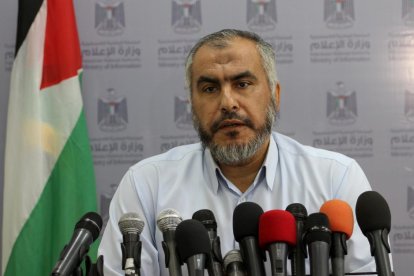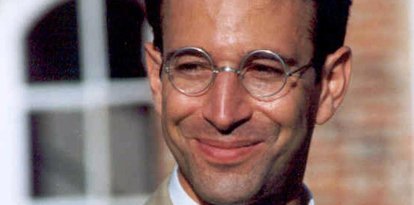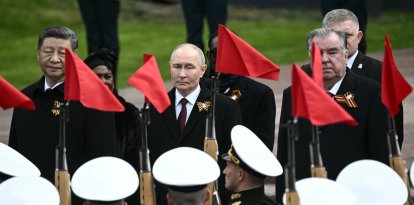Ghazi Hamad, senior Hamas official, leaves an interview when asked about the massacre of civilians on Oct. 7
The terrorist leader insisted that there were no orders to kill civilians, despite evidence to the contrary.

El líder de Hamás Ghazi Hamad / Cordon Press
"How do you justify killing people as they sleep, families?" Ghazi Hamad, a member of Hamas's political bureau, left an interview with the BBC when reporter Hugo Bachega asked him that question while they were discussing the Oct. 7 attacks.
During the interview, Hamad insisted on the version of the events promoted by Hamas that the death of the Israeli civilians was not planned but rather resulted from spontaneous confrontations when the terrorists were carrying out a military operation.
The explanation provided by Hamas, and by Hamad before leaving the interview, that the murder of civilians was not orchestrated by the group's leadership, clashes with the evidence from that day. In addition to plans and instructions to attack every Israeli in their path, the Israel Defense Forces (IDF) released testimonies from terrorists, such one who called his parents to proudly tell them that he had killed a dozen Jews, including at least one woman.
Just a few days ago, the IDF published new evidence about the orders given by the terrorist group's leadership to its fighters. Some documents instruct Hamas members to begin gathering hostages once they are finished "purifying [killing] their operating area." They were also told to "kill anyone that might pose a threat or cause a disturbance."
Another post by the IDF shows a note delivered by Hamas commanders that encourages "beheading and extracting hearts and livers":
Days before, Israel posted a video of interrogations of captured terrorists. In them, several Hamas members admit that they had instructions to kill civilians. One of them says: "The orders regarding civilians were killing the young men, capturing the women, the elderly, and the children."
RECOMMENDATION





















